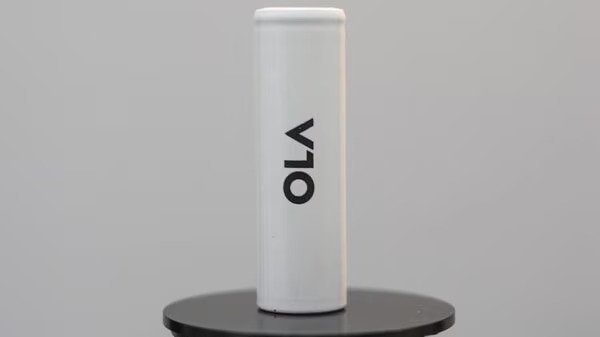Ola Electric is about to become one of the few producers of electric vehicles (EVs) by utilising the state-of-the-art 4680 battery cells for commercial purposes.
These battery cells are created and made in-house by Ola Electric Mobility, a subsidiary of Ola Electric, and are currently being tested in Ola Electric’s two-wheelers. In the global battery market, the 4680 battery is seen as revolutionary. Tesla decided to utilise a larger cylindrical structure, which resulted in an increase in size from 21 mm in diameter and 70 mm in length to 46 mm in diameter and 80 mm in length thus the designation “4680.”
Compared to the present 2170 battery cells, the new cells offer a 5x increase in energy density and a 6x increase in energy output. Put simply, they can manage heat and store more energy, which results in a 20%+ increase in range and distance.

New Ola EV Battery Project
An Ola Electric project report states that, in contrast to the 110 cells needed with current technology, just 40 cells per battery pack will be needed for an electric scooter that can run on four kilowatt hours.
Because there are fewer cells, there are fewer failure spots, which lowers costs, and because the batteries weigh less, they operate more efficiently.
Among the other members of this exclusive group is Elon Musk’s Tesla, which in 2021 became the first company to employ this new technology commercially with its Model Y and Cybertruck by manufacturing the batteries in-house. Additionally, Tesla is now working with international battery producers. Several automakers in China, the European car firm Stellantis (owner of Jeep, Citroën, Fiat, and Peugeot), the German behemoth BMW, and General Motors of the United States are also implementing this technology.
Sources claim that Ola Electric Mobility has submitted more than 200 patent applications in order to create the novel technology. It will belong to one of the roughly twelve multinational battery companies that own and produce them. Ola intends to utilise the batteries produced at its Tamil Nadu plant for internal usage, initially ramping up to 10,000 cells per day. By the second half of 2025, the factory is expected to generate 5.45 million cells, with a 6.4 gigawatt-hour (GWh) annual capacity.


